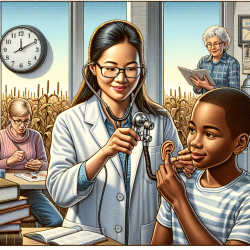Introduction
Autism Spectrum Disorder (ASD) is a developmental disorder characterized by challenges in social communication and repetitive behaviors. Despite advances in understanding ASD, its pathophysiology remains elusive. Recent research, however, has begun to shed light on the role of GABAergic dysfunction and synaptic plasticity in ASD. A study titled "Modulation of corticospinal excitability by transcranial magnetic stimulation in children and adolescents with autism spectrum disorder" explores the potential of repetitive transcranial magnetic stimulation (rTMS) as a tool for understanding and potentially treating ASD.
Key Findings from the Study
The study conducted by Oberman et al. (2014) investigated the effects of rTMS on corticospinal excitability in children and adolescents with ASD. Here are some key findings:
- Age and Duration of Response: The study found a positive linear relationship between age and the duration of rTMS effects, suggesting that older children may experience longer-lasting modulation of corticospinal excitability.
- Paradoxical Responses: Interestingly, more than one-third of the participants exhibited a paradoxical facilitatory response to rTMS, which typically suppresses corticospinal excitability in adults. This finding supports theories of aberrant plasticity and GABAergic dysfunction in ASD.
- Safety and Tolerability: The study confirmed the safety and tolerability of rTMS in children and adolescents with ASD, with only minor side effects reported.
Implications for Practitioners
For practitioners working with children with ASD, these findings offer several implications:
- Consideration of Age: The age-dependent response to rTMS suggests that age should be considered when designing therapeutic interventions using rTMS.
- Potential Biomarker: The study suggests that rTMS could serve as a practical biomarker for GABAergic dysfunction in ASD, providing a non-invasive tool to assess and monitor treatment effects.
- Encouragement for Further Research: The paradoxical responses observed in some participants indicate a need for further research to understand the underlying mechanisms and optimize rTMS protocols for individual patients.
Conclusion
This study represents a promising step forward in understanding the neurophysiological underpinnings of ASD and highlights the potential of rTMS as both a research tool and therapeutic intervention. Practitioners are encouraged to consider these findings in their practice and to stay informed about ongoing research in this rapidly evolving field.
To read the original research paper, please follow this link: Modulation of corticospinal excitability by transcranial magnetic stimulation in children and adolescents with autism spectrum disorder.










